Five years of recovery since Hurricane Ike
Last updated 9/12/2013 at Noon
This week marks the fifth anniversary of Hurricane Ike which hit Southeast Texas Sept. 13, 2008 and left many areas devastated in the months to follow. For some it has taken years to fully recover.
It was the ninth named storm, fifth hurricane, and third major hurricane of the 2008 Atlantic hurricane season.
It was a Cape Verde-type hurricane which started as a tropical disturbance near Africa at the end of August.
On Sept. 1, 2008, it became a tropical storm west of the Cape Verde islands.
By the early morning hours of Sept. 4, Ike was a Category 4 hurricane, with maximum sustained winds of 145 mph which made it the most intense Atlantic storm of 2008.
Ike passed over the Turks and Caicos Islands as Category 4, with winds 135 mph on Sept. 7.
Moving west along Cuba, it made two landfalls as a Category 4 hurricane on Sept. 7 and as a Category 1 hurricane two days later.
At one point, Ike was over 600 miles in diameter.
The storm had come ashore with high winds and towering waves which pushed boats ashore, smashed many houses and flooded thousands of buildings. Power was knocked out to millions of customers. Many waited weeks or months for service to be returned. The storm first made landfall at 2:10 a.m. in Galveston as a strong Category 2 hurricane. The hurricane force winds extended 120 miles from the center and tropical storm force winds extended far beyond that. For the state of Texas, it was also one of the most costliest.
However, the storm surge was slowly moving into the area long before the storm actually hit. The water began to cover roadways and moved into the neighborhoods.
With Ike moving into the Gulf, thousands of people fled the area. This meant about 84,000 Orange County residents and more 250,000 Jefferson County residents filled up the roadways as they tried to escape.
Parts of Orange County suffered the wrath of the storm more than others. Many lost their houses or businesses. For weeks, many slept in tents, stayed with family or friends while some left everything behind to start life somewhere else. People were rescued from roof tops or attics and carried to safety by boats or heavy equipment.
The effects of Hurricane Ike in Texas were crippling and long-lasting. Ike’s effects included deaths, widespread damage, and impacted the price and availability of oil and gas.
As of Dec. 27, 2008, 37 people are known to have lost their lives in Texas due to Ike while hundreds are still missing.
In Orange County, Greg Walker, of Port Neches, attempted to travel on Highway 87 on his way home. But, the rising flood waters would prevent him from making it and contributed to his death. The 40-year-old father of three was returning from Louisiana, where he had taken his family.
Around 2:30 a.m., Walker told a 911 dispatcher that he was going to try to swim to safety. He was instructed to use his seat cushions as a flotation device. He tried calling his wife, but the line went dead.
Orange County officials used search teams, helicopters and cadaver dogs but could not find Walker. Fifteen days after Walker’s last call, volunteers from Texas EquuSearch discovered his body in a tree-line levee a mile from where his truck was found.
An estimated 100,000 homes had been flooded in Texas. Locally, those who had evacuated came back to a mess. Houses were destroyed. People who had gotten onto a bus and evacuated to a shelter parked their car near Lamar State College-Orange. When they returned, the discovered their vehicles has been under water and ruined.
After a much talked about debacle, FEMA trailers began to arrive in the area. FEMA officials estimated 2,000 mobile homes and park model homes to be in Southeast Texas for residents whose houses were destroyed as a result of Hurricane Ike. It was a frequent occasion to see the trailers being moved in and out of the surrounding cities.
Citizens worked to repair their homes while for some it took a bit longer as they fought with insurance companies for what they both thought was fair.
Local schools struggled at first. Some closed, but opened as soon as they could. Four weeks after the storm hit, BCISD was back in business. They moved students around and brought in trailers for the task of giving students as sense of normalcy. After many renovations, schools were opened.
Over the next few years, local cities worked with homeowners to find a solution about their condemned properties. Some qualified for buy-out programs while others faced demolition.
As each hurricane season approaches, area citizens hold their breath while they hope for the best.
The 2013 Atlantic hurricane season, which forecasters had predicted would be more active than normal, has turned out to be something of a dud so far as an unusual calm hangs over the tropics.
As the season heads into the historic peak for activity, it may even enter the record books as marking the quietest start to any Atlantic hurricane season in decades.
However, lately, it may be Humberto which will start off the season which is currently a strengthening tropical storm.
As of Sept. 10, there have been no hurricanes so far during the 2013 season in the Atlantic.
However, Humberto, near the Cape Verde Islands on Monday has a chance at becoming the Atlantic’s first hurricane by later Tuesday.
If Humberto strengthens to a hurricane and does so before Wednesday midday, the late-forming hurricane record will remain intact.

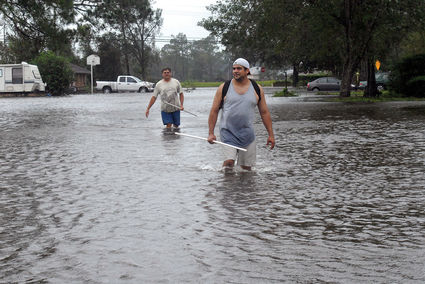
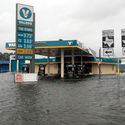
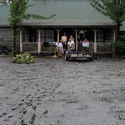
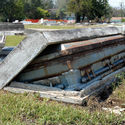
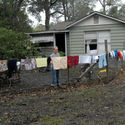
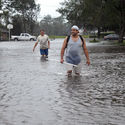













Reader Comments(0)